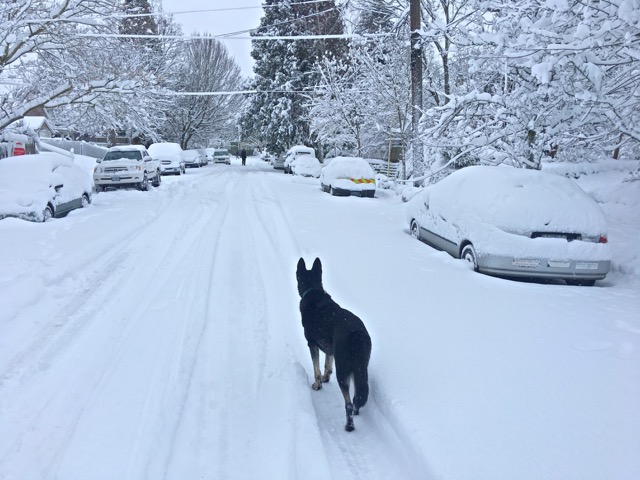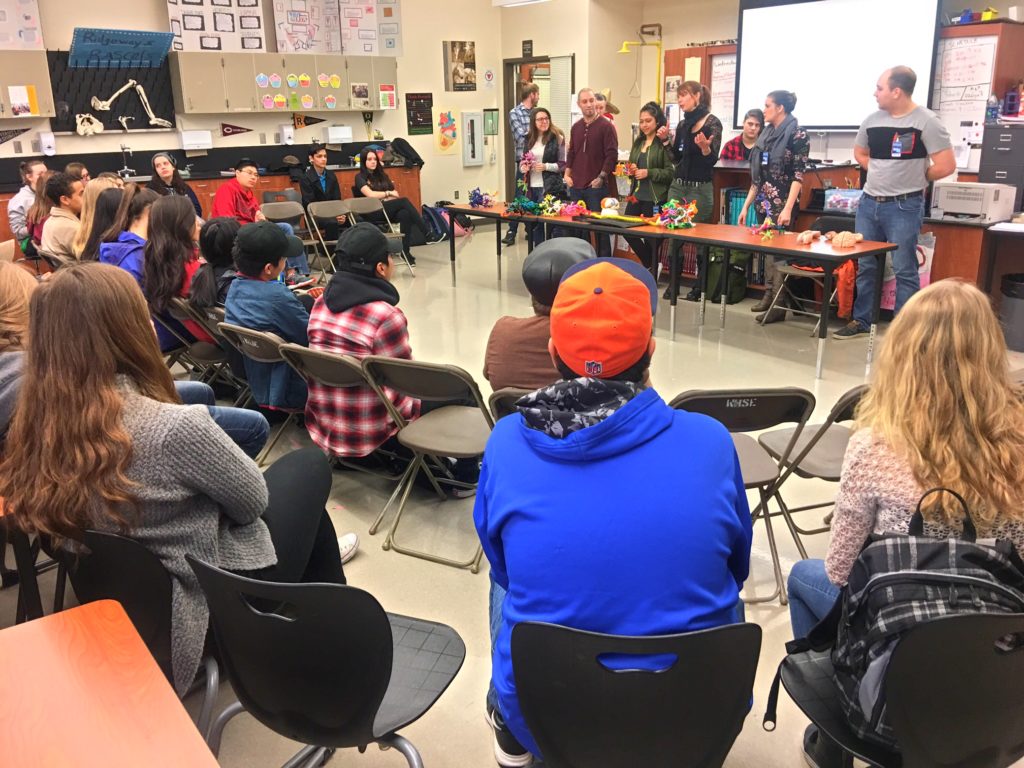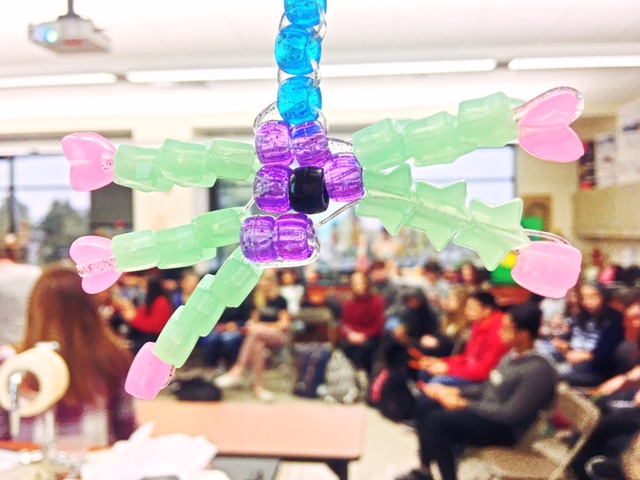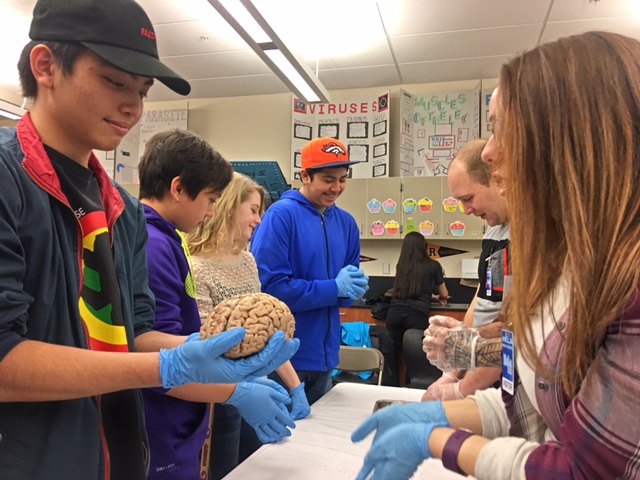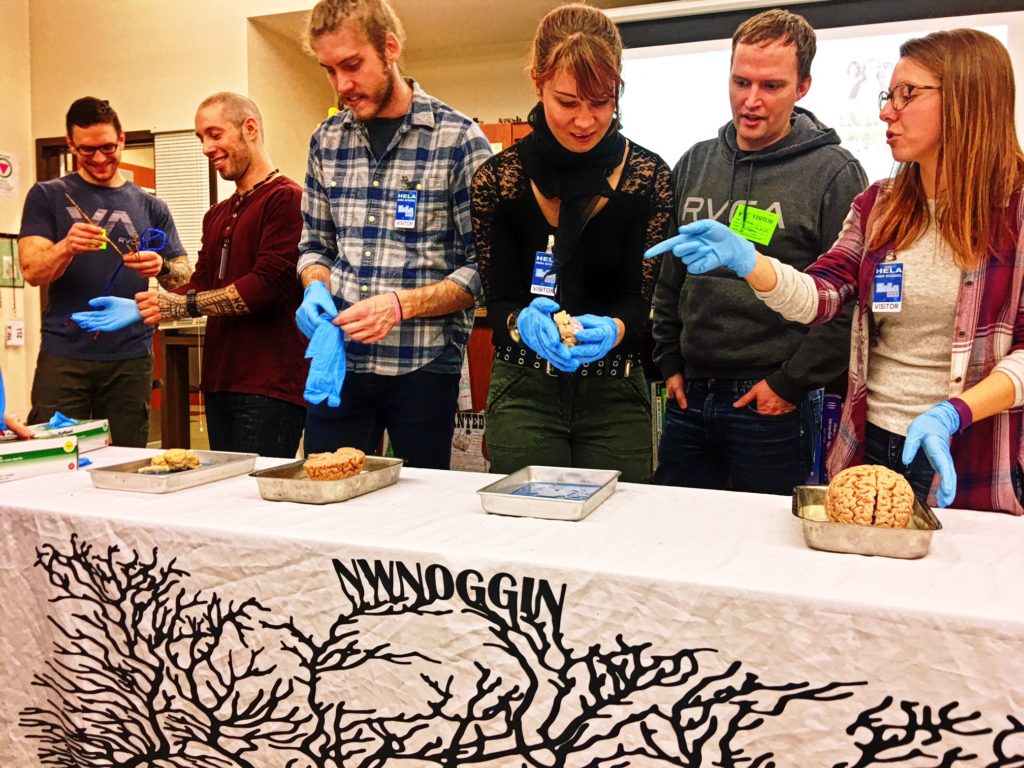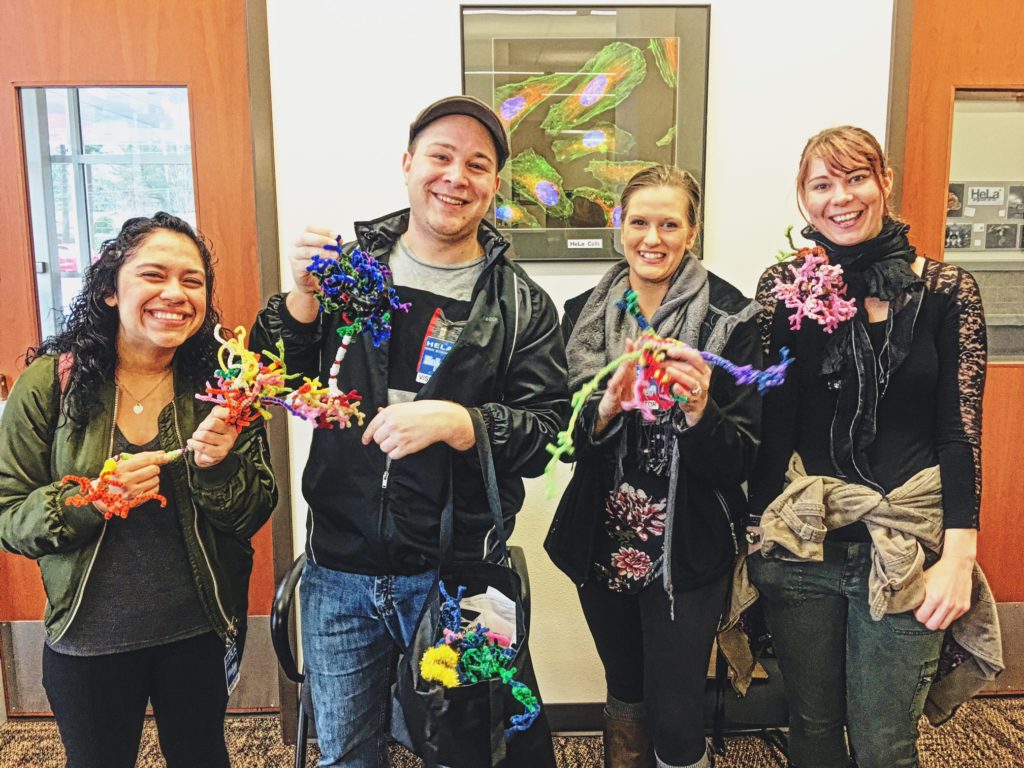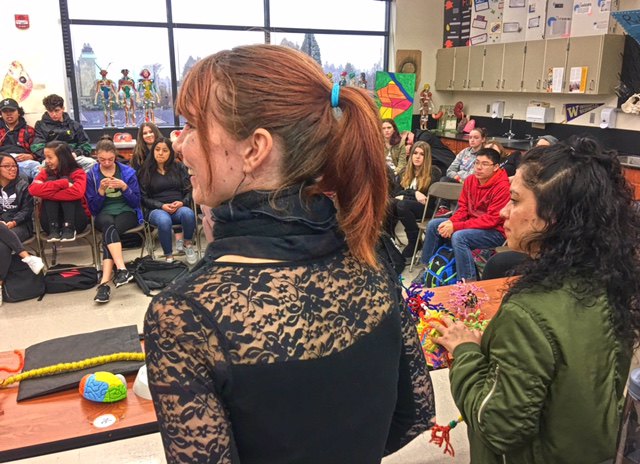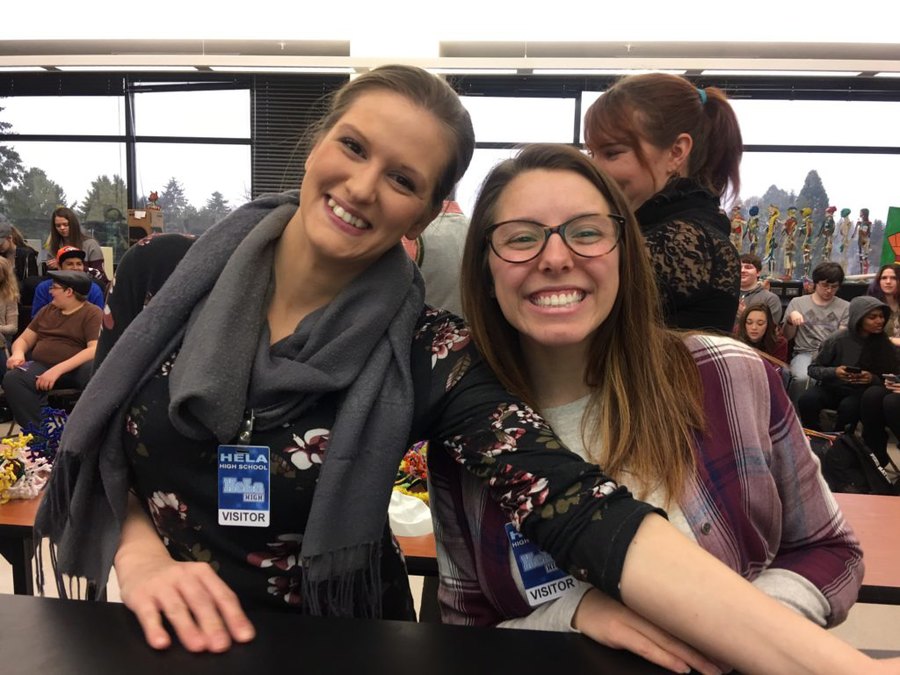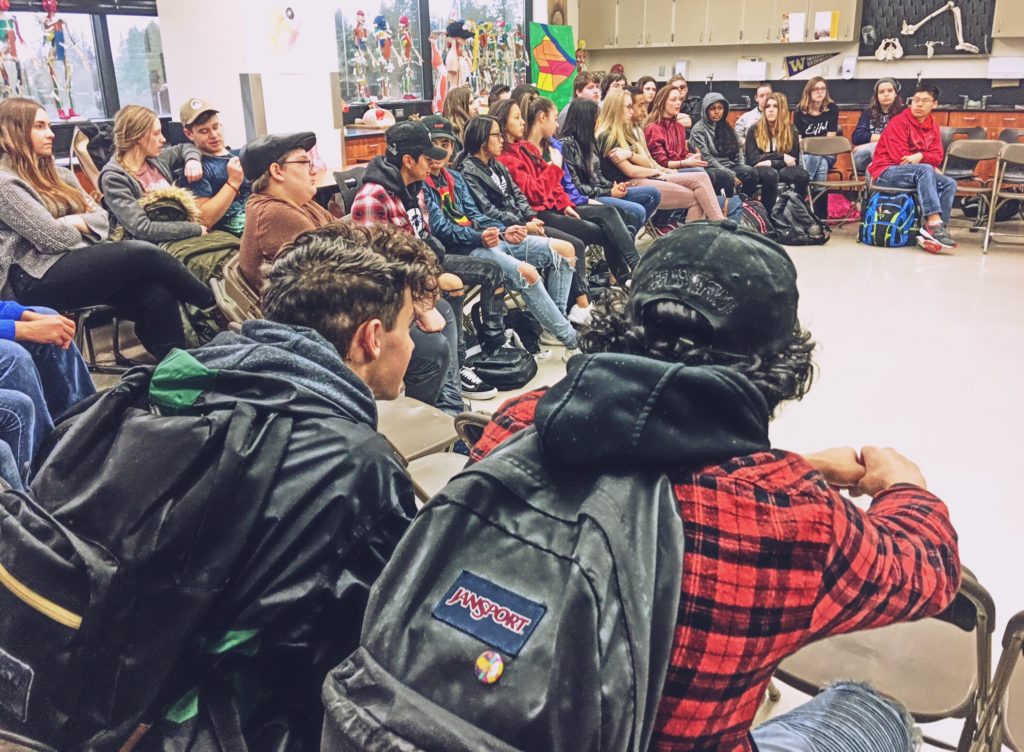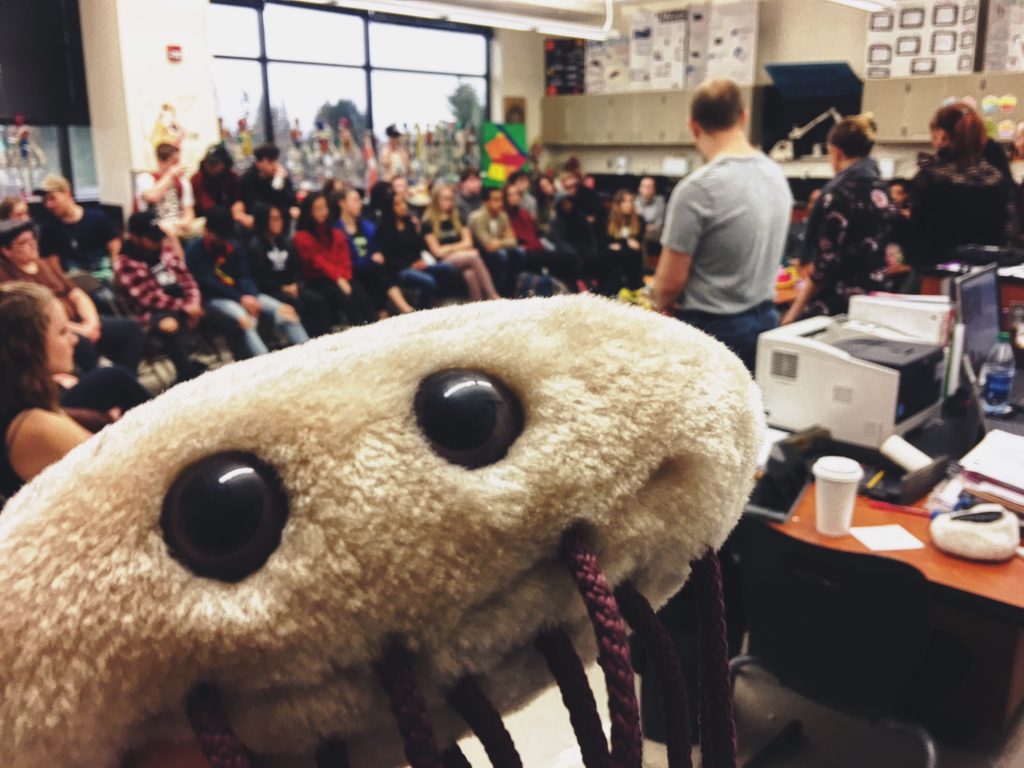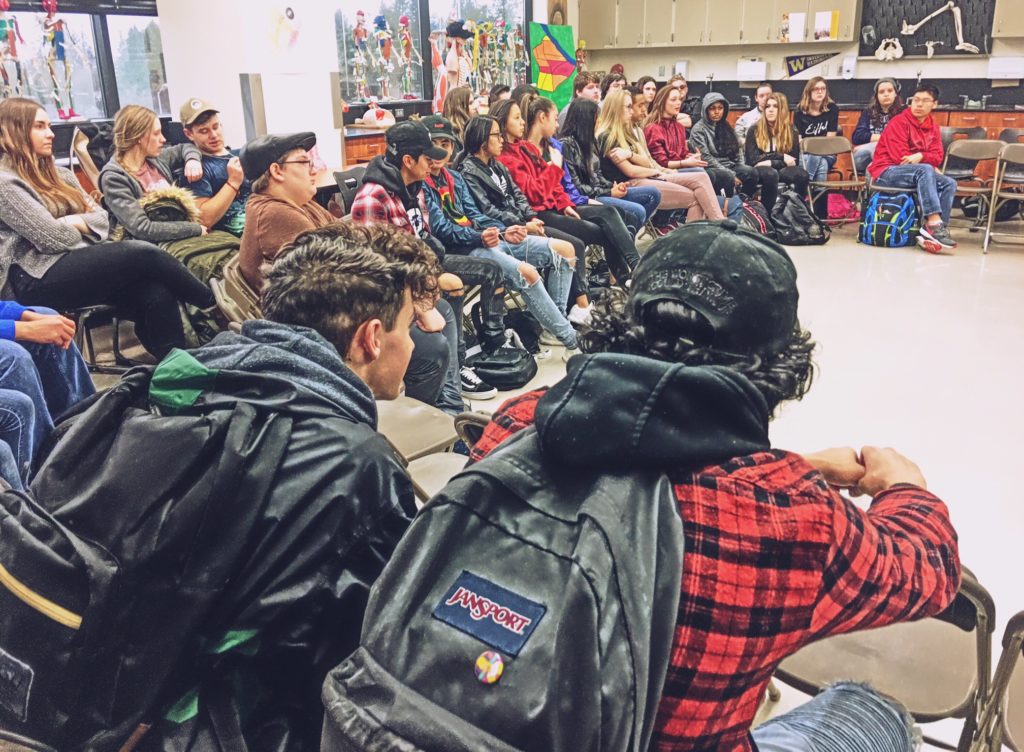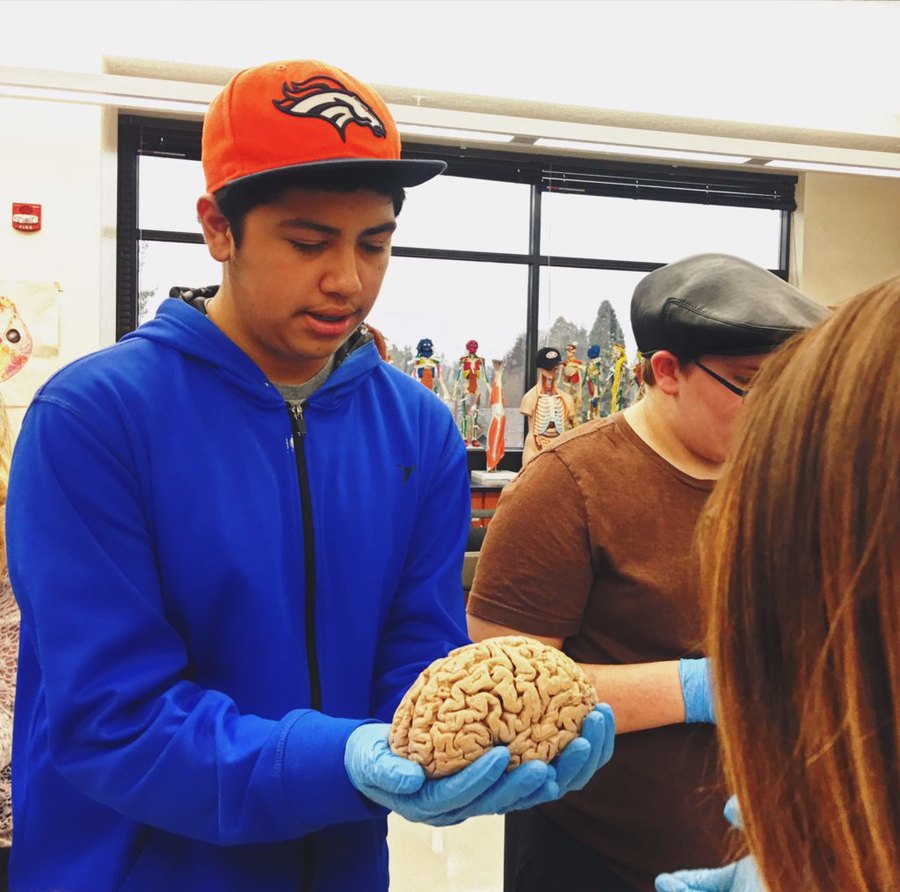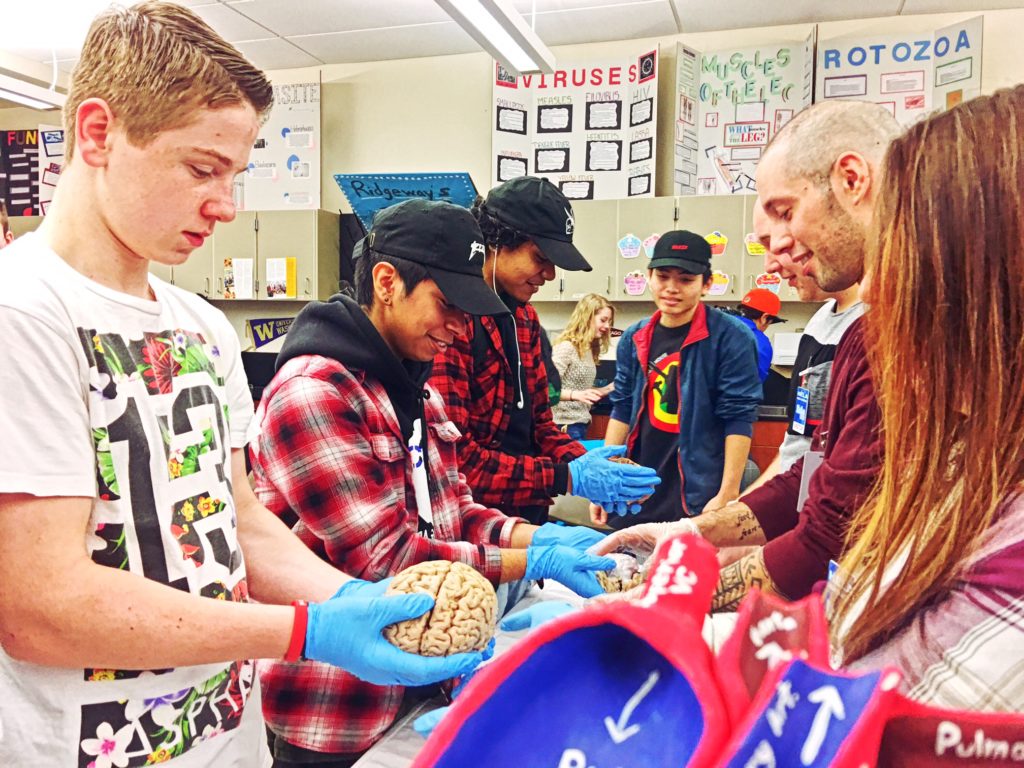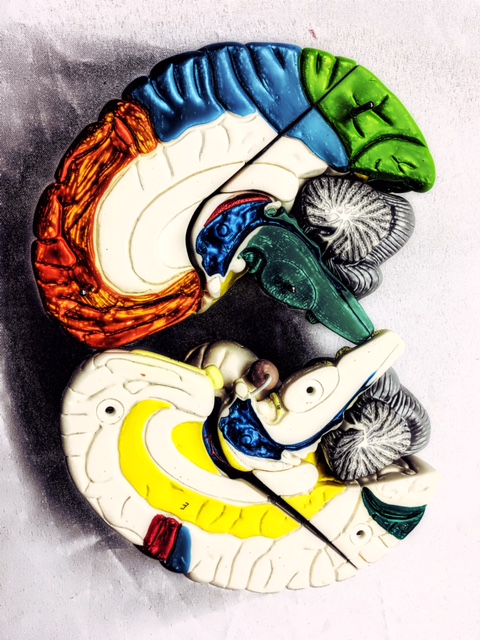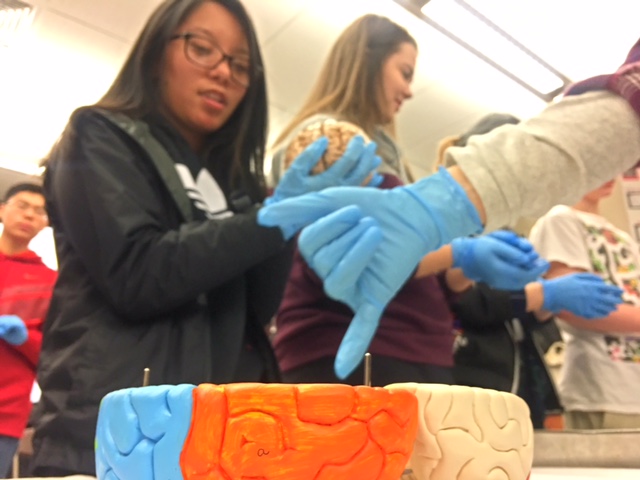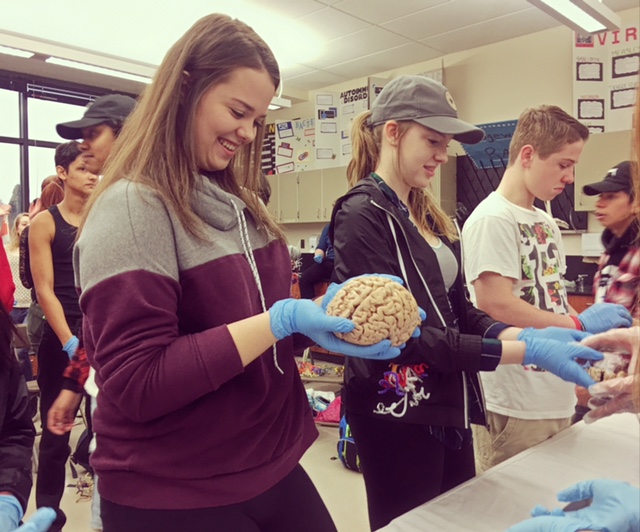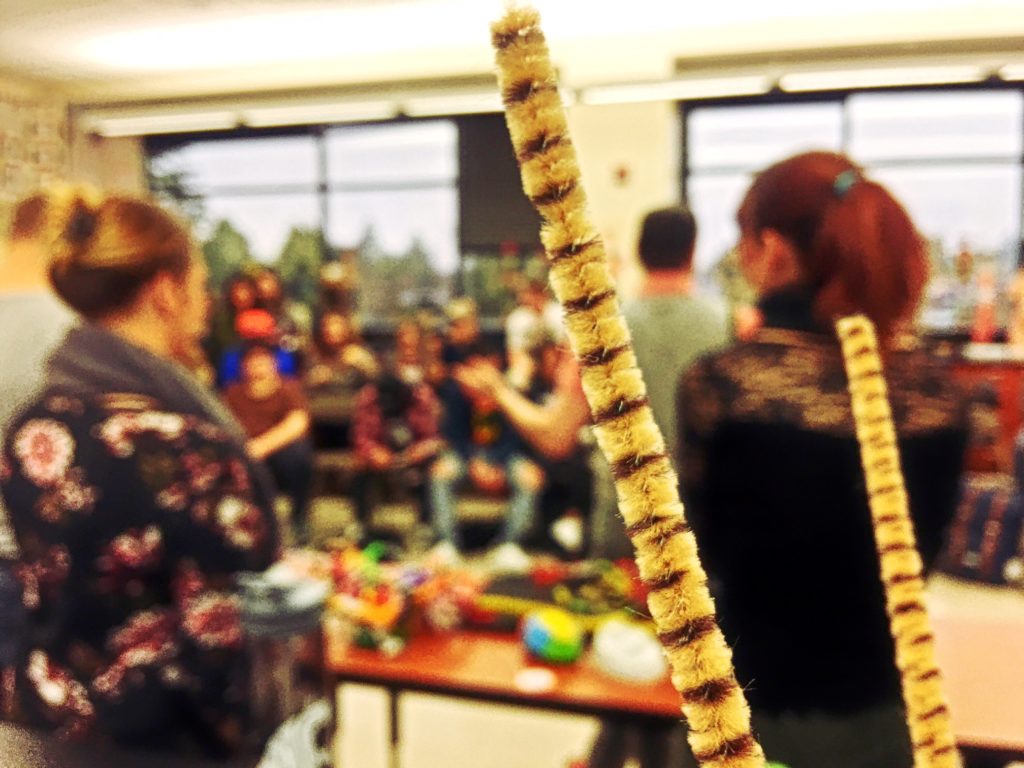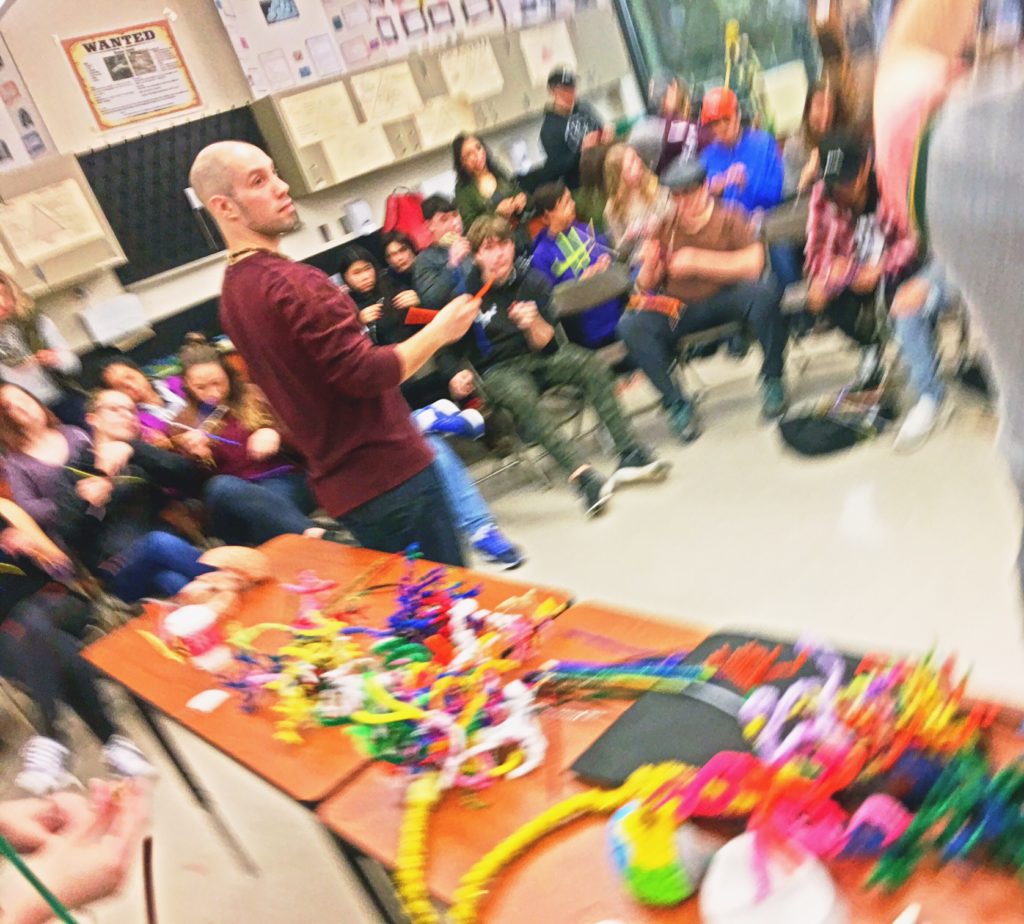NW Noggin returned to Susie Ridgeway’s science classroom at Henrietta Lacks High School (HeLa High) in Vancouver this week, after our two previously scheduled visits were scuttled by snowpocalypses..!
We assembled quite a crowd of volunteers educators, including Sulema Rodriguez, Allana Zuccaro, Jessica Patching-Bunch and Kayla Stippich from Psychology at Portland State University, Jordan Felton from Oregon State University, Scott Jones from Behavioral Neuroscience at OHSU, and Kim Engeln, Mary Nelson, Jeremy Dunford, Nick Dunn, Tony Carley, Christina Williams and Eric Polch from Neuroscience at WSU Vancouver!
We needed a crowd, as we met with almost 350 students! Our developing experts in science communication led successive classrooms in animated discussions of neuroscience topics, techniques, and current research efforts underway in local laboratories.
The remainder of this post is written by accomplished Noggin volunteer Kim Engeln, an undergraduate from WSU Vancouver who also conducts research on parental behavior in fish at Reed College in Portland, OR…
Outreach at HeLa High is always a rewarding experience. Named after Henrietta Lacks, whose special cells helped accelerate the pace of medical research, the hallways are adorned with microscopic images of her magnificently important cells.
LEARN MORE: The Immortal Life of Henrietta Lacks
LEARN MORE: NIH director explains HeLa agreement
The students eagerly met us at the main office and brought us to their classroom, expressing excitement and anticipation of our visit. Our first class at 8:00am was surprisingly alert and engaged, which is not typical for teenagers that early in the morning! We introduced ourselves, and shared why each of us are inspired by neuroscience research, and what sort of research we are currently conducting…
I (Kim) talked about my own research in Suzy Renn’s lab at Reed College on parental care behavior in fish, and how I use markers of genetic expression to study “filial cannibalism” – the tendency of cichlid mothers raised in artificial lab environments for decades to eat their own offspring! Wild populations of these same fish from Africa aren’t cannibalistic, and I’m curious about exploring what genetic differences might reveal…
LEARN MORE: Renn Lab, Department of Biology, Reed College
LEARN MORE: Maternal care and altered social phenotype in Astatotilapia burtoni cichlid fish
Christina Williams explained to the class her motivation to study emotional memory disorders, including PTSD, while Mary Nelson discussed the fascinating symptoms and underlying physiological damage associated with hemispatial neglect (a topic she’d just presented on in an Advanced Biological Basis of Behavior class!).
LEARN MORE: Hemispatial neglect
Eric Polsch, an undergraduate and a phlebotomist (someone who specializes in drawing blood) expressed his interest in science and medicine, and eagerness to share his knowledge and clinical experiences with the class.
Sulema Rodriguez shared how her own struggles and fascination with stuttering led her to pursue research in speech therapy – a story that deeply resonated and inspired our students. One student in particular had many questions, noting that he also had a speech impediment, and wanted to learn more about current research…
LEARN MORE: PubMed NIH on Stuttering
LEARN MORE: A review of brain circuitries involved in stuttering
Scott Jones talked about his graduate research at OHSU on adolescent brain development, with a goal to use brain imaging as a diagnostic tool for neurodevelopmental disorders like ADHD…
LEARN MORE: OHSU scientists awarded major NIH grant to study adolescent brain development
A round of questions spiked some great conversations about some of neuroscience’s most unique questions, such as dreaming, consciousness, learning, and memory. With one class we tested their superior frequency detection skills versus the adults in the room, who had all lost more of their cochlear hair cells!
TEST YOUR OWN HEARING: Mosquito Ringtones
However after the students got to feel and hold a real human brain, their questions poured in and provoked some pretty wonderful and inspiring conversations with the volunteers…
One student was curious about the psychologists in the television show “Criminal Minds,” and was excited to learn that clinical psychologists do indeed work in that field (although the psychologists in the show usually do things that a real clinical psychologist would never do!).
Others were interested in neurosurgery, mental health research, and clinical neuropsychology…
Noggin Arts Coordinator Jeff Leake also led students through the basics of brain cells, and we had the opportunity to speak with students in smaller groups as they crafted their own creative pipe cleaner neurons!
MAKE YOUR OWN BRAIN CELLS: March for Science @ Velo Cult on March 29!
The enthusiasm of our Noggin volunteers was contagious, and clearly shared by the students at HeLa High. We hope some of that inspiration will lead these great kids to become pioneers in brain research one day. After all, that’s what outreach is all about!
Many thanks to Susie Ridgeway for welcoming us back to her extraordinary class!



